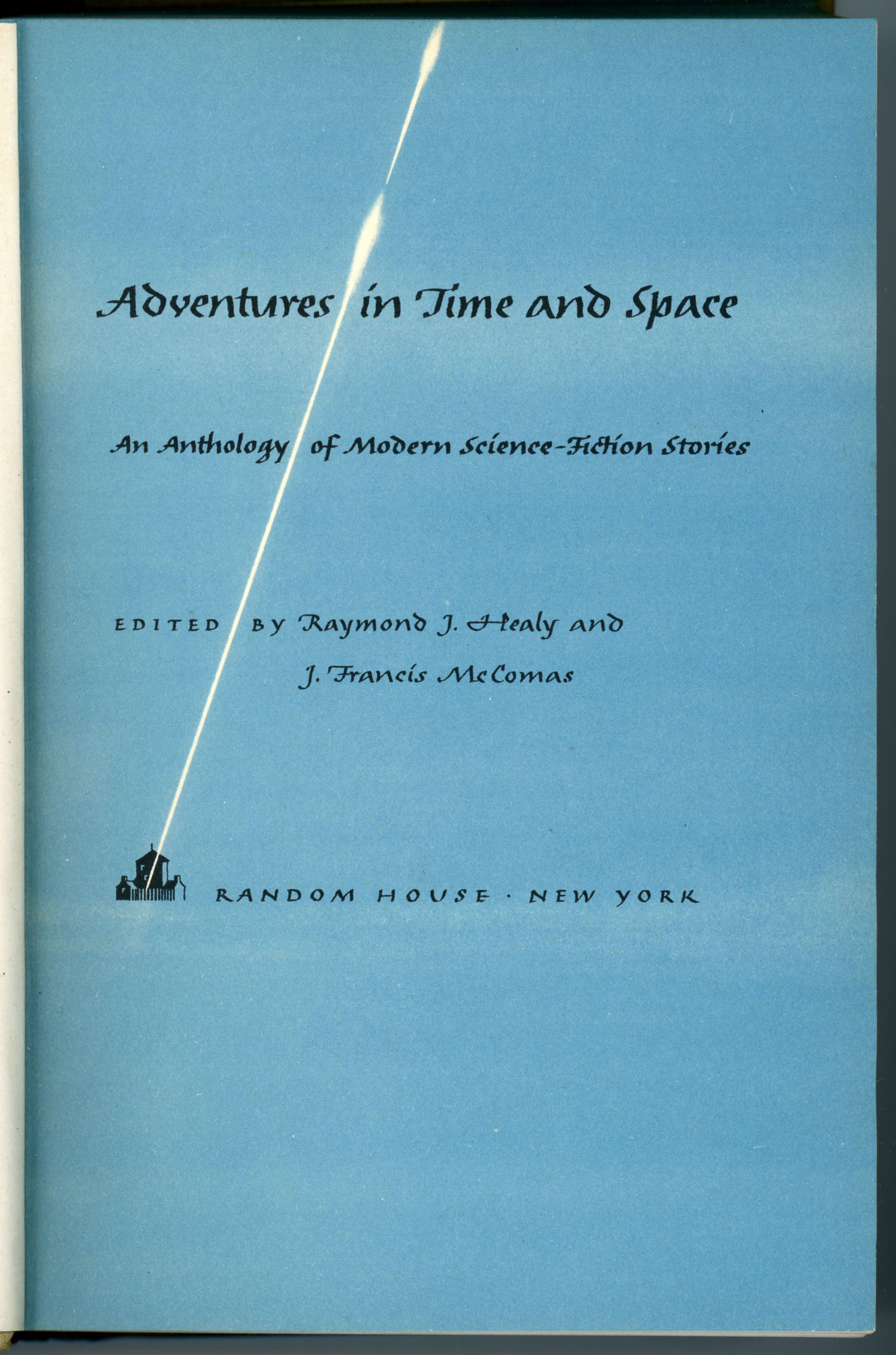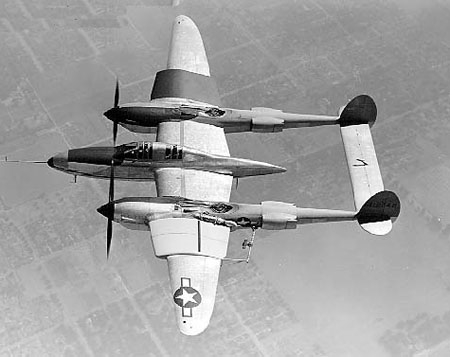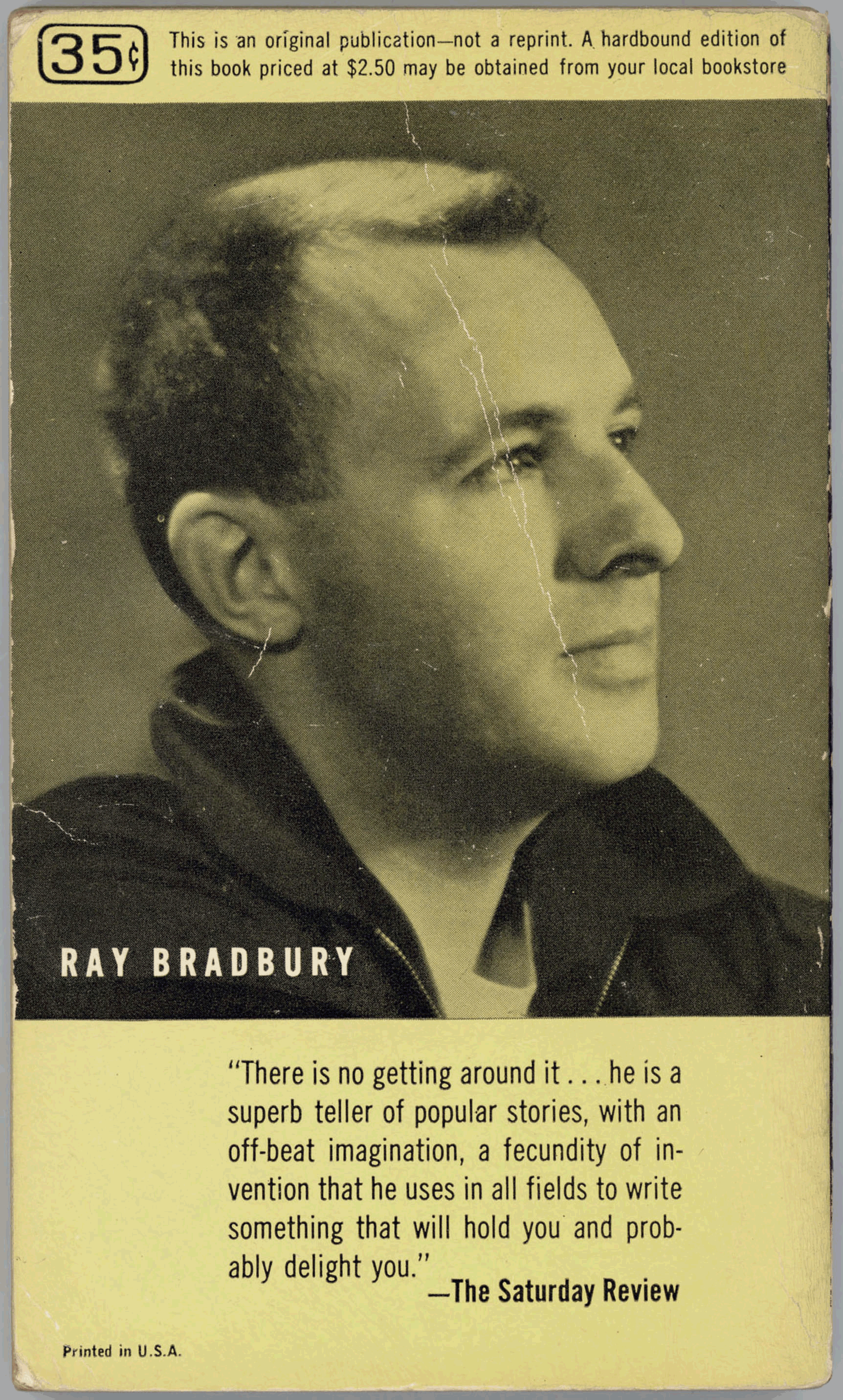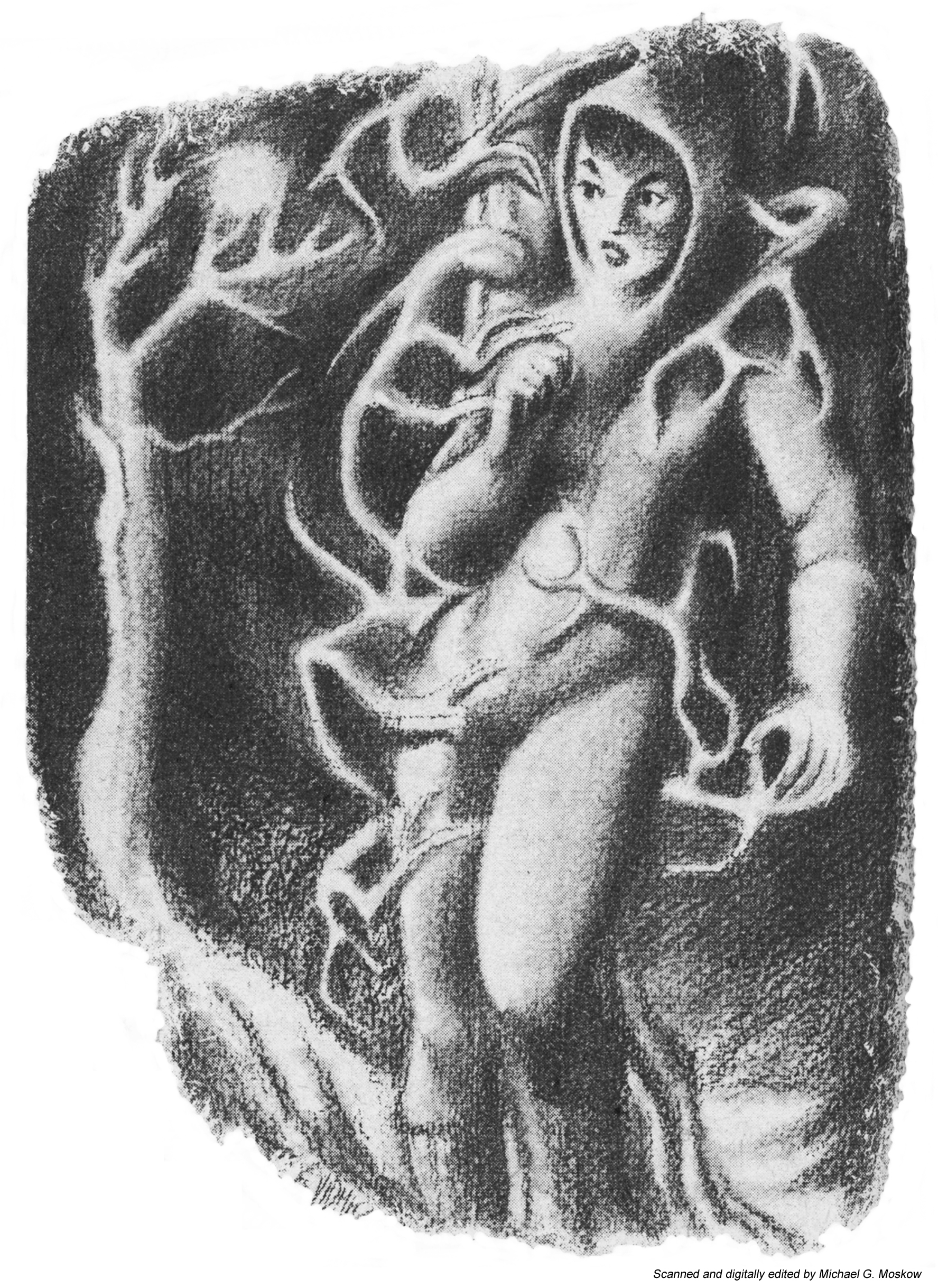Raymond J. Healy and J. Francis McComas’ 1946 Adventures in Time and Space was intriguing by its front cover and title page bearing the impression and symbol of a rocket (?) rising upwards to the “right”.
The former, from a symbolized globe; the latter, from the logo of a version of the “house” (of publishing?) that in a variety of depictions has symbolized Random House Publishers.
The book’s dust jacket (the example shown below is from the International Science Fiction Database; the front cover and title page are from my own copy) is a little different. It features a pair of rising rockets ascending to the “left”, superimposed over three concentric blue circles – symbolizing space?
The cover art is by George Salter, who created cover art – of a very distinctive and easily identifiable style – for several of the early issues of The Magazine of Fantasy and Science Fiction.
You can enjoy a detailed history and moving reminiscence about this volume in Dr. Michael J. Vassallo’s essay “Adventures in Time and Space” – A Classic Science Fiction Anthology, at his Timely-Atlas-Comics blog.


 Contents
Contents
INTRODUCTION (xi)
REQUIEM, by Robert A. Heinlein, from Astounding Science Fiction, January, 1940 (p. 3)
FORGETFULNESS, by Don A. Stuart, from Astounding Stories, June, 1937 (p. 20)
NERVES, by Lester Del Rey, from Astounding Science Fiction, September, 1942 (p. 46)
THE SANDS OF TIME, by P. Schuyler Miller, from Astounding Stories, April, 1937 (p. 115)
THE PROUD ROBOT, by Lewis Padgett, from Astounding Science Fiction, October, 1943 (p. 144)
BLACK DESTROYER, by A.E. van Vogt, from Astounding Science Fiction, July, 1939 (p. 177)
SYMBIOTICA, by Eric Frank Russell, from Astounding Science Fiction, October, 1943 (p. 207)
SEEDS OF THE DUSK, by Raymond Z. Gallum, from Astounding Science Fiction, June, 1938 (p. 249)
HEAVY PLANET, by Lee Gregor, from Astounding Science Fiction, August, 1939 (p. 276)
TIME LOCKER, by Lewis Padgett, from Astounding Science Fiction, January, 1943 (p. 286)
THE LINK, by Cleve Cartmill, from Astounding Science Fiction, August, 1942 (p. 308)
MECHANICAL MICE, by Maurice A. Hugi, from this volume (p. 320)
V-2: ROCKET CARGO SHIP, by Willy Ley, from this volume (p. 344)
ADAM AND NO EVE, by Alfred Bester, from Astounding Science Fiction, September, 1941 (p. 365)
NIGHTFALL, by Isaac Asimov, from Astounding Science Fiction, September, 1941 (p. 378)
A MATTER OF SIZE, by Harry Bates, from Astounding Stories, April, 1934 (p. 412)
AS NEVER WAS, by P. Schuyler Miller, from Astounding Science Fiction, January, 1944 (p. 460)
Q.U.R., by Anthony Boucher, from Astounding Science Fiction, March, 1943 (p. 476)
WHO GOES THERE?, by Don A. Stuart, from Astounding Science Fiction, August, 1938 (p. 497)
THE ROADS MUST ROLL, by Robert A. Heinlein, from Astounding Science Fiction, June, 1940 (p. 551)
ASYLUM, by A.E. van Vogt, from Astounding Science Fiction, May, 1942 (p. 588)
QUIETUS, by Ross Rocklynne, from Astounding Science Fiction, September, 1940 (p. 641)
THE TWONKY, by Lewis Padgett, from Astounding Science Fiction, September, 1942 (p. 655)
TIME-TRAVEL HAPPENS!, by A.M. Phillips, from Unknown, December, 1939 (p. 676)
ROBOT’S RETURN (variant of ROBOTS RETURN, from Astounding Science Fiction, September, 1938), by Robert Moore Williams, from this volume (p. 687)
THE BLUE GIRAFFE, by L. Sprague de Camp , from Astounding Science Fiction, August, 1939 (p. 698)
FLIGHT INTO DARKNESS, by Webb Marlowe, from Astounding Science Fiction, February, 1943 (p. 721)
THE WEAPONS SHOP (variant of THE WEAPON SHOP, from Astounding Science Fiction, December, 1942), by A.E. van Vogt (p. 741)
FAREWELL TO THE MASTER, by Harry Bates, from Astounding Science Fiction, October, 1940 (p. 779)
WITHIN THE PYRAMID, by R. DeWitt Miller, from Astounding Stories, March, 1937 (p. 816)
HE WHO SHRANK, by Henry Hasse, from Amazing Stories, August, 1936 (p. 825)
BY HIS BOOTSTRAPS, by Anson MacDonald, from Astounding Science Fiction, October, 1941 (p. 882)
THE STAR MOUSE, by Fredric Brown, from Planet Stories, Spring, 1942 (p. 933)
CORRESPONDENCE COURSE, by Raymond F. Jones, from Astounding Science Fiction, April, 1945 (p. 953)
BRAIN, by S. Fowler Wright, from The New Gods Lead, April, 1932 (p. 972)
______________________________
Adventures in Time and Space, or selections from the content of the original volume, has been published 14 times since that 1946 edition, the most recent edition having been released by the Science Fiction Book Club in 2001.
The edition from 1954 is shown below. Though Charles Binger’s artistic style is vastly different from that of George Salter, the cover retains a pair of rising rockets as its central thematic element.
(Selections From) Adventures in Time and Space
Published in April, 1954, under imprint of Pennant Books (Random House)
Cover art by Charles Binger

 Contents
Contents
Requiem, by Robert A. Heinlein (p. 1)
(Astounding Science Fiction, January, 1940)
Black Destroyer, by A.E. van Vogt (p. 21)
(Astounding Science Fiction, July, 1939)
Time Locker, by Lewis Padgett (Henry Kuttner and Catherine L. Moore) (p. 56)
(Astounding Science Fiction, January, 1943)
Mechanical Mice, by Maurice A. Hugi (p. 81)
(Astounding Science Fiction, January, 1941)
As Never Was, by P. Schuyler Miller (p. 109)
(Astounding Science Fiction, January, 1944)
Quietus, by Ross Rocklyne (Ross L. Rocklin) (p. 128)
(Astounding Science Fiction, September, 1940)
Robot’s Return, by Robert Moore Williams (p. 144)
(Astounding Science Fiction, September, 1938)
Farewell to the Master, by Harry Bates (John W. Campbell) (p. 157)
(Astounding Science Fiction, October, 1940)
 Bob Blanchard’s art for Five Down and Glory depicts a P-38 Lightning fighter plane passing before the smoke trail of a fallen Japanese single-engine fighter. But, a closer look reveals that his P-38 does not have the appearance of a typical P-38 fighter.
Bob Blanchard’s art for Five Down and Glory depicts a P-38 Lightning fighter plane passing before the smoke trail of a fallen Japanese single-engine fighter. But, a closer look reveals that his P-38 does not have the appearance of a typical P-38 fighter. 
 From the fabric and tubing biplanes of World War I, through the thunderous era of the Thunderbolts and Mustangs and Lightnings of World War II, to the silver-sleek jets knifing through the thin air seven miles above the Korean peninsula, FIVE DOWN AND GLORY presents the sweeping story of America’s ace fighter pilots.
From the fabric and tubing biplanes of World War I, through the thunderous era of the Thunderbolts and Mustangs and Lightnings of World War II, to the silver-sleek jets knifing through the thin air seven miles above the Korean peninsula, FIVE DOWN AND GLORY presents the sweeping story of America’s ace fighter pilots.
















